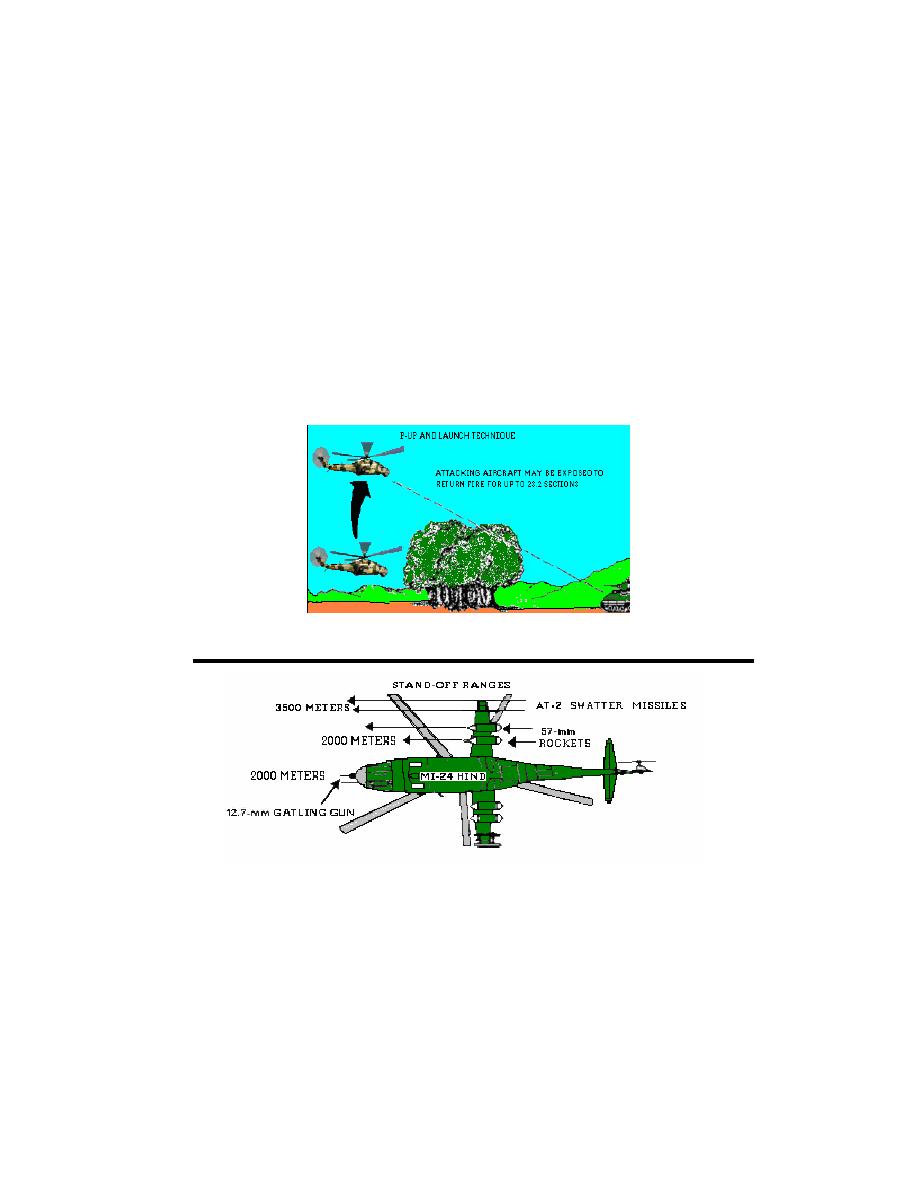
4. Recognize Threat Helicopter Ground Support Role.
Threat helicopter forces supporting ground operations operate nearly the same as US helicopter
forces. For example, Commonwealth of Independent States (CIS), formerly Soviet Union
helicopters are agile and make good use of cover, and concealment offered by folds in the earth and
trees (Figure 4). Their armament includes antitank guided missiles (ATGM), free-flight air-to-air
missiles (FFAR), and radar-directed 12.7 mm nose-, or chin-mounted machine or Gatling type
guns. CIS ATGM's are electronically controlled or laser guided and can engage and destroy any
armored vehicles at standoff ranges of more than 3 kilometers (Figure 5). Using sneak-and-peek
techniques, attack helicopters can deliver a devastating blow against exposed maneuver units.
Their lethality is somewhat softened by practical considerations. They must detect a target to
engage it and remain in the open long enough to aim and fire their weapons. For some ATGM's,
attack helicopters must maintain track on both the missile and target throughout the missile's flight
which can be as long as 23.2 seconds. The 57 mm FFAR is an area weapon and is effective against
exposed troops and lightly armored vehicles at ranges greater than 1,000 meters.
Figure 4. Threat Helicopter in Ground Support Role
Figure 5. Threat Helicopter Weapon Ranges
8



 Previous Page
Previous Page
